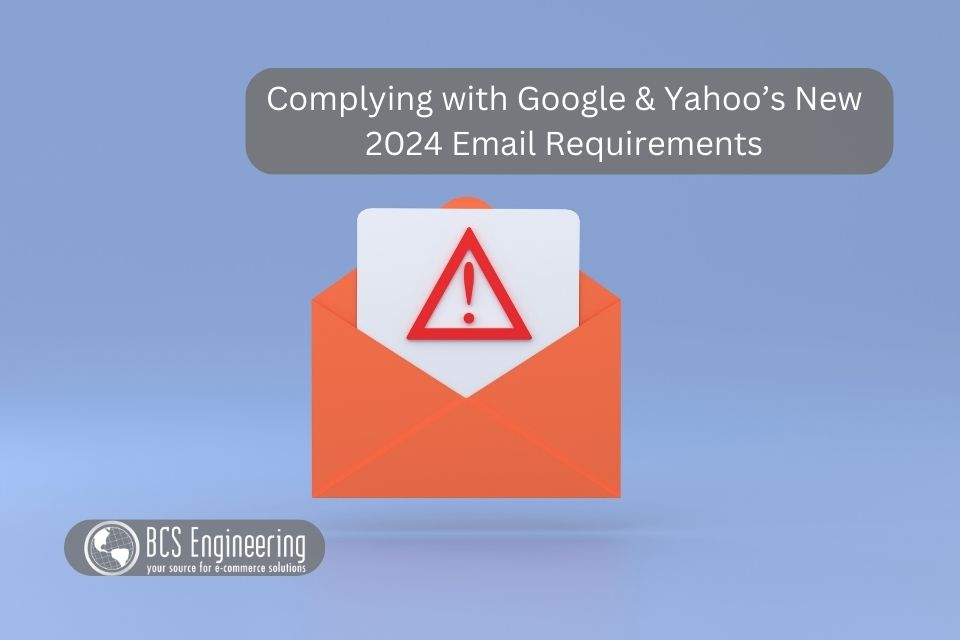Have you recently been seeing notifications from your email management providers concerning new email requirements and a February 2024 deadline? Starting in February, Google and Yahoo are implementing strong email security requirements that can impact your emails reaching your clients! Here’s what you need to know.

Why is this happening?
Both Google and Yahoo are requiring bulk email senders to up their email security with a brand-new set of requirements. These requirements will affect whether your bulk emails reach your clients or end up spam (or worse, be blocked entirely.) Why are these two major email services doing this?
The main reason why these requirements are being implemented is to fight against spam and malicious emails. In your own inbox, you may encounter spam every day, deleting unsolicited and uninteresting emails without even opening them. At the same time, users and businesses alike have to be on the lookout for email attacks. Emails pretending to be someone else, tailored to look safe and asking for sensitive information: spoofing and phishing attacks like these have become common place.
Google and Yahoo’s new requirements aim to authenticate that it is really your business sending emails to your clients. Ideally, these requirements will bring down the amount of spam and dangerous emails that we receive in our inboxes, leaving us with the emails we want to see.
What are Google and Yahoo’s new email requirements?
Starting in February of 2024, Google and Yahoo will be start enforcing a set of new email requirements that will push bulk email senders, such as businesses, to make their emails more secure. These requirements vary depending on how many emails you send daily.
If you send under 5000 bulk emails a day, you need to:
- Have email authentication with either SPF or DKIM.
- Maintain low spam rates.
If you send over 5000 bulk emails a day, you need to:
- Have both SPF and DKIM email authentication.
- Implement a DMARC policy.
- Create messages that pass DMARC alignment.
- A one-click unsubscribe option in your messages.
What happens if I don’t fulfill the requirements?
Starting in February 2024, bulk email senders who do not fulfill Google & Yahoo’s requirements will see an impact on their overall visibility. Your emails to clients and subscribers may be marked as spam or worse, be completely blocked from their inboxes. Not complying with these requirements can be detrimental to your marketing and general business communications with your clients.
What do I need to do?
To ensure the deliverability of your business emails, take some time to do the following:
Check if you are compliant with current email requirements
For some of you, it’s possible that you already have implemented these requirements and have maintained a good email reputation. Check your email domain and see if you have SPF, DKIM, and DMARC set up already. Check your messages and see if you have a one click unsubscribe option and verify your current spam rate. Below are some tools to help see what your current email domain has:
- https://mxtoolbox.com/ – with the help of this tool, you can check if your email domain has SPF, DKIM, and DMARC running successfully by toggling through search options. You can also select “Blacklist” to see if your email domain is found on any major email blacklists.
- https://www.talosintelligence.com/ – Find out about your email domain’s general reputation as well as your email volume within the last month.
- https://www.gmail.com/postmaster/ – Google’s Postmaster Tools can show you how Google sees your email domain! Delivery errors, spam reports, and more can be discovered with this tool.
Document all of the applications that current send emails for your business
Now more than ever, you need to have a list of all the applications you use to send bulk emails to your clients. This includes:
- Email service provider, like Aweber, ConvertKit, MailChimp, Flowdesk, etc
- CRMs
- Ecommerce and Web applications such as Magento, BigCommerce, Shopify, Kajabi, WordPress, etc.
- Etc.
Look through each of your applications and see how to comply with the new requirements
Many of us have received notifications from our applications about these upcoming email requirements. For each application you are using to send emails, read their documentation on how to make sure you are compliant with their software tools. Each application will be different, so each may have a different process.
For some of you, this may be easy if you only have a handful of applications sending emails for you. For others, it may be harder the more applications you have, or if you are juggling multiple domains. Have your tech provider help you through this process or, if you don’t have someone competent in email services, feel free to contact us for support.
Need help?
Still confused on how to meet these new requirements and want help? Contact us and we can help you through it!
